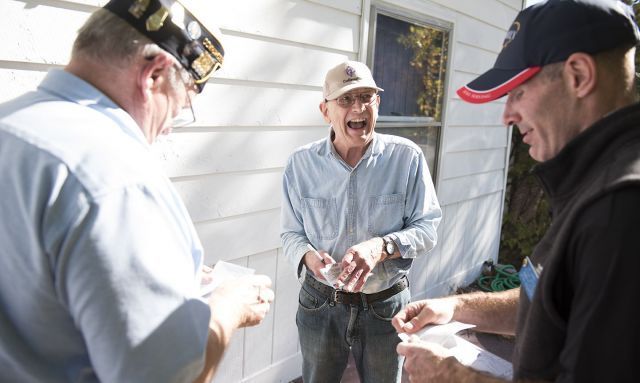
More than 300,000 Legionnaires have not renewed their membership. Let’s bring these members back into our ranks.
There are more than 310,000 non-renewed American Legion members from 2019. If we are going to meet American Legion National Commander Bill Oxford’s renewal goal of 90 percent, we need to take action.
A fifth renewal notice is about to reach these expired, valuable members to bring them back into The American Legion. The key to renewal success is for American Legion post and district leadership to follow up with these expired members now that renewal notices are reaching their mailboxes.
This can be achieved through Buddy Checks – call or pay them a visit to check on their health and wellbeing. (legion.org/membership/buddycheck)
“These members are already on our rosters, and it is our duty to engage them,” Oxford said. “We need to communicate with these expired members about what we do for our communities so they see the value of continuing to be a member of this great organization.”
Under Tips for Recruiters on The American Legion’s membership web page (legion.org/membership) there are 49 ways that author Mark Levin, CAE, gives on how to retain members. The following are a few ideas from Levin:
- Send a pre-renewal letter on the post’s letterhead from the commander that shares about the great year the post had, and how the post is looking forward to working with the member again. By sending the letter prior to the renewal notice, you alert members that the renewal is coming and raise their need to respond. And having the letter on your post stationery adds to the credibility of the message and increases the chances it will be opened promptly.
- List names of non-renewals at post meetings. Then select 10 non-renewed members for each meeting and assign members at that meeting to contact those lapsed members. This shows non-renewed members that the post still cares about them. It also draws your current members into the membership retention process. Your post’s expired member listings can be found under the Find Members in my Area section on mylegion.org.
- List first-time renewals in a special section of your newsletter. This will remind these members that the decision they made a year ago to join your post was a good decision. It will also remind them that the post is glad to have them back again for a second year.
- Acknowledge renewals, just like new member applications. Your post more than likely makes a big deal when new members join by sending them welcome letters and by putting their names in the post newsletter. However, does your post do anything to acknowledge renewals other than sending them their new Legion card? Find a way to thank them for renewing. It may be by putting a thank you letter in the envelope with their membership card. These renewing members are making the same financial commitment as first-time members and they deserve recognition.
Another item that impacts non-renewals is the transmittal process. Posts are encouraged not to delay in sending in membership dues to national – when dues are delayed, the paid member continues to receive renewal notices. Plus, expired members lose the benefit of possibly receiving an American Legion National Emergency Fund grant when a natural disaster strikes and their daily life has been affected.
Transmitting of dues can be quickly done through MyLegion. “Now is the time to make renewals your number one priority,” Oxford said. Membership in The American Legion can also easily be renewed online at legion.org/renew.
- Dispatch

